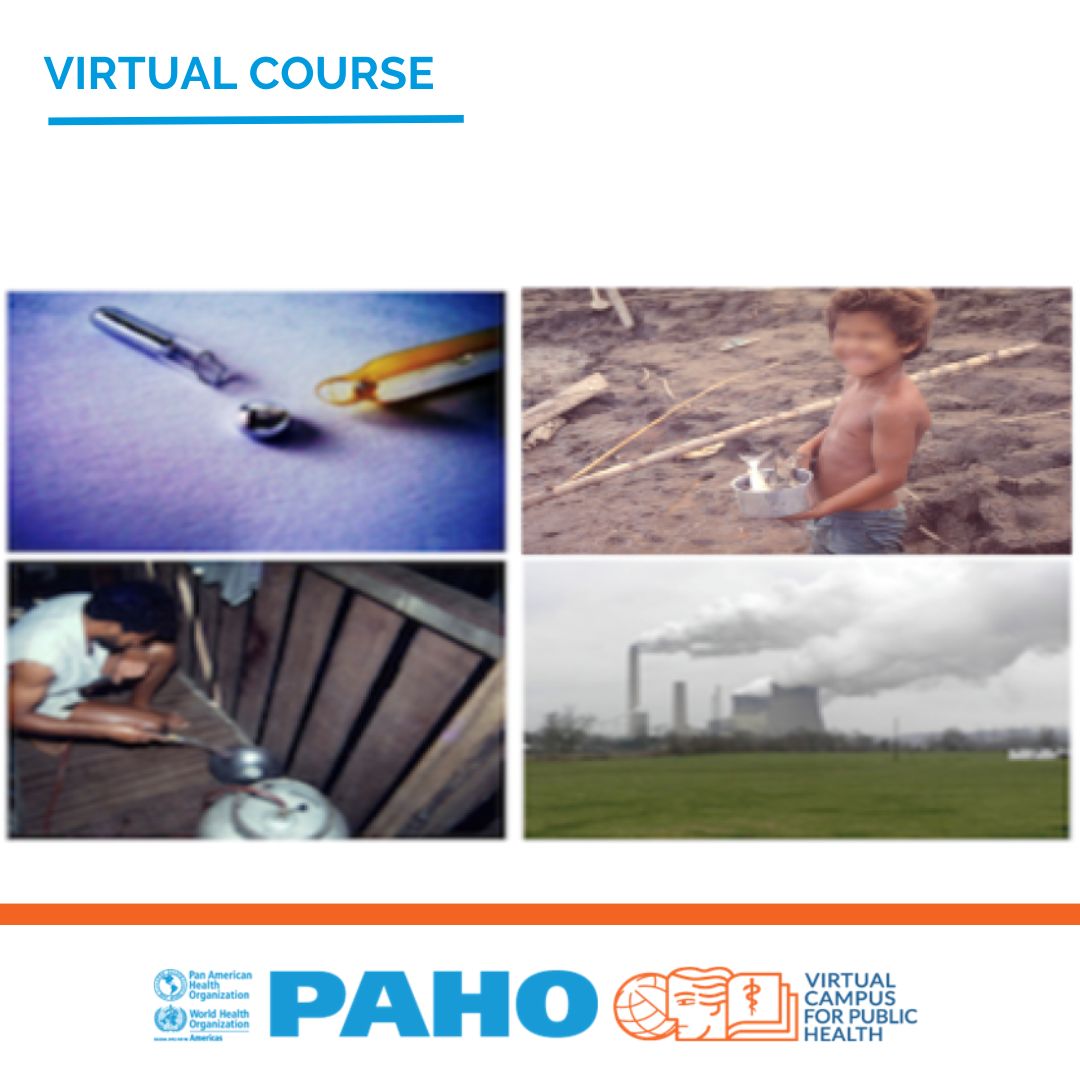
VERSIÓN ESPAÑOL ENGLISH VERSION
Course description
Mercury, in its various forms and compounds, is a global pollutant of public health concern. Mercury from anthropogenic emissions is transported in the atmosphere over long distances, undergoes chemical changes, and can bioaccumulate in food chains and reach people through the consumption of fish.
This course explores the different forms of mercury and its compounds with their respective sources, environmental distribution, toxicological aspects, and prevention measures. In addition, it introduces the Minamata Convention and Resolution 67.11 (2014) of the World Health Assembly (WHA), and its considerations on public health aspects related to mercury.
The course has been developed by the Chemical Safety Program of the Department of Communicable Diseases and Environmental Determinants of Health (CDE), under the Climate Change and Environmental Determinants of Health Unit (CE) and the Virtual Campus of Public Health of the Pan American Health Organization (PAHO), in collaboration with a multidisciplinary team of experts.
The course has been implemented in Spanish since 2017. This is the self-learning version of the course. The course is free.
Purpose of the course
Develop competencies in professionals in the areas of environmental public health and chemical safety to understand and manage problems related to sources of exposure to mercury and how to act with correct prevention measures.
General objectives
The objectives of the course include the identification of the impacts of mercury on human health and the environment, and the ways to prevent such impacts, considering the implementation of the Minamata agreement, obligations of the parties to the agreement, highlighting the specific articles under responsibility of the health sector.
Target audience
The course aims at reaching environmental public health professionals working in public institutions, including ministries of health, environment and other sectors, as well as universities and other governmental and non-governmental institutions, with an agenda on chemical safety, especially in the Minamata agreement about mercury.
Number of hours certified by the course
An estimated 30 hours is required to complete the course.
Modality
This is a self-learning course in which participants can use the resources at their own convenience. Participants can progress through the units at their own pace, managing their course time independently.
Course structure
The course includes contents presented in interactive text (multimedia), followed by questionnaires, distributed in seven units:
Unit 1 - Mercury as a global pollutant of public health concern
-
Chemical aspects, sources, uses, emissions and wastes with mercury by sectors and regions
-
Minamata Convention and WHA resolution 67.11 regarding the role of the health sector
Unit 2 – Human toxicology of mercury and its compounds
-
Toxicity of mercury and its compounds
-
Biomarkers and biomonitoring
-
Health effects
-
Prevention measures for chronic and acute exposure
Unit 3 - Use of products with mercury in health services
-
Technical aspects and policy tools for the replacement of mercury thermometers and tensiometers
-
Gradual decrease in the use of dental amalgam
-
Use of thiomersal in vaccines
Unit 4 - Artisanal and Small-Scale Gold Mining (ASGM)
-
Use of mercury in gold production processes, occupational and environmental exposures to mercury and its compounds.
-
Health conditions in ASGM communities.
-
Public health strategy for the action plan to eliminate or reduce the use of mercury in ASGM
Unit 5 - Skin lightening products
-
Use of mercury in skin lightening products
-
Exposures and health risks
-
Health effects of exposure
-
Risk communication and prevention of exposures
Unit 6 - Risks and benefits of fish consumption
-
Methylmercury in food chains
-
Biomonitoring of local fish
-
Benefits of fish consumption
-
Balance between risks and benefits
-
Bases for the elaboration of fish consumption guides
Unit 7 - Information, research and evaluation
-
Tools and experiences for information exchange
-
Mapping and communications with social actors
-
Research and evaluation on the effectiveness of the agreement
